Page one opened with information, including statistics, from the Annual Report of the Commissioner of Indian Affairs about Carlisle and other schools as reported by Indian agents. Page two contains more arguments for, and accounts of support for, educating Indian youth. The article "Our Dining Hall" describes the physical space, the work the…
Native Americans Visiting the School
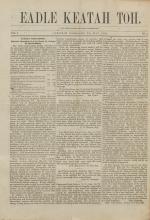
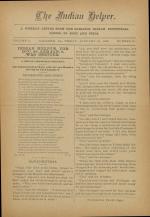
The first page opened with a notice that there were no Indian Helper newspapers published for December 28 and January 3rd. A notice followed: “A Novel Christmas Present: Our Superintendent Made with his own Hands a tin Cup for Each Employee.” Next was a poem, by “E.G.“dated Dec. 25, ’89 titled “The School Poet Again Stirred” about…
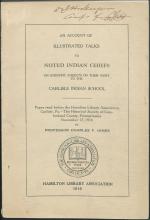
Charles Francis Himes, a retired professor of Dickinson College, delivers a presentation for the Hamilton Library Association (the Cumberland County Historical Society). In this talk, Himes recounts various science lectures and demonstrations that he gave more than three decades earlier for students of the Carlisle Indian School as well as…
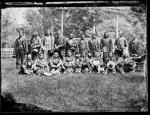
Group portrait of thirteen Crow and Shoshone and Bannock, who visited the school on May 18, 1880. They are pictured with five white agents and interpreters, as well as Richard Henry Pratt (seated in chair at right). They are posed in front of the bandstand on the school grounds.
Back row on the far left is interpreter Tom Stewart, and…
![James H. Miller, Jane Vane, a female student and a visitor [version 1], c.1884 James H. Miller, Jane Vane, a female student and a visitor [version 1], c.1884](/sites/default/files/styles/views_taxonomy/public/image-photo/NAA_74318.jpg?itok=B1d5qD6W)
Studio portrait of James H. Miller, Jane Vane, an unidentified female student and a visitor, probably a Pueblo chief or family member.
Note: The male student was previously identified as Benjamin Thomas based on cataloging of this NAA negative. A researcher suggested that he is actually James H. Miller. The identification of Jane…
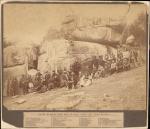
Photo taken of visiting Cheyenne and Arapahoe Chiefs with Carlisle students and government employees at Devil's Den at the Gettysburg battlefield. The image is dated November 28, 1884.
One person is identified only as "Kise." It is not known if this is Kias Red Wolf (as known as Kise) or Kise Williams.
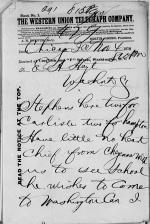
Agent Charles Crissey informs Commissioner of Indian Affairs E. A. Hayt that Agent Stephens is there with two students for the Carlisle Indian School and two for Hampton Institute. Crissey notes that he is also with Cheyenne Chief Little No Heart, who would like see the school. Crissey asks if he can bring Little No Heart with him.
Note…
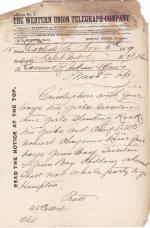
Telegram from Richard Henry Pratt noting the arrival of Agent Crissey with Sisseton, Standing Rock, and Cheyenne River Sioux children, Green Bay Menominee children, and Chief Little No Heart at Carlisle. Pratt suggests that all these children should be sent to the Hampton Institute.
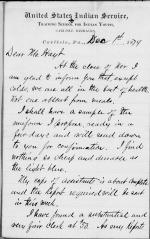
Richard Henry Pratt provides Commissioner of Indian Affairs E. A. Hayt with a variety of updates about the Carlisle Indian School: everyone is in good health, he will send Hayt a uniform sample in a few days, his corps of assistants is almost complete, he's found a clerk, he'd like to keep a former Carlisle Barracks employee on the staff for…
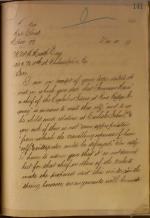
Commissioner of Indian Affairs Ezra A. Hayt denies the request of American Horse to visit Washington DC and Carlisle (to see his children), citing concerns about the winter weather. Hayt says to W. McK. Heath (the recipient of the letter) that plans will be made for some of the members of the Oglala Sioux to visit Carlisle in the spring instead…
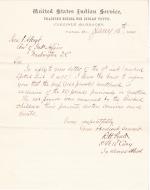
Richard Henry Pratt reports that the Rosebud delegation that visited Carlisle consumed 1,103 pounds of beef during their visit.
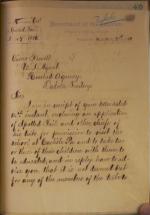
Commissioner of Indian Affairs Ezra A. Hayt informs the Indian Agent of Rosebud Agency Cicero Newell that he cannot consider Spotted Tail's request to visit Carlisle this winter. "It is not deemed best for any of the members of the tribe to make the proposed visit this winter." Instead, arrangements will be made in the spring.
…
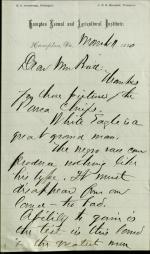
Samuel Chapman Armstrong of the Hampton Institute writes to Richard Henry Pratt thanking him for photographs of visiting Ponca chiefs at Carlisle, discussing aspects of their visit and Armstrong's fundraising attempts for a new building.
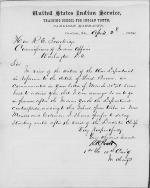
Richard Henry Pratt references the recent denial of the detail of Lieutenant Brown for recruiting, and then informs the Commissioner of Indian Affairs that he can recruit students himself from New Mexico and Colorado in after the Dakota Chiefs visit the Carlisle Indian School.
Note: This item was copied from U.S. National Archives…
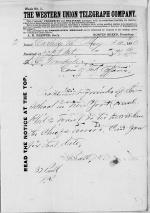
Richard Henry Pratt asks Commissioner of Indian Affairs R. E. Trowbridge to set the date when chiefs visit the Carlisle Indian School so that "friends of the school" can visit at the same time.
Note: This item was copied from U.S. National Archives microfilm reels (M234), which were filmed from the original documents found in Record…
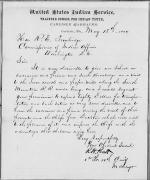
Richard Henry Pratt requests to spend $80 to transport students to the South Mountain to visit the iron works and paper mills and to have a picnic. Pratt would like to arrange this excursion when the Dakota chiefs and families are visiting.
Note: This item was copied from U.S. National Archives microfilm reels (M234), which were filmed…
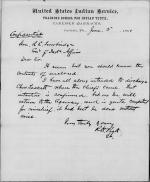
Richard Henry Pratt encloses a copy of a letter from B. F. Beveridge to Charles Tackett about how to ensure that the Indian chiefs while visiting Washington D.C. stay at the Washington House (Beveridge's establishment). In his cover letter, Pratt informs the Commissioner that he intends to discharge Charles Tackett but thinks it should be done…
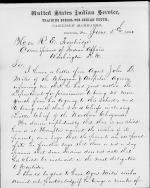
Richard Henry Pratt informs Commissioner of Indian Affairs R. E. Trowbridge that the Cheyenne & Arapaho Agent John D. Miles would like to send 25 students from his agency to the Carlisle Indian School. Miles added that he'd like several chiefs, including Northern Cheyenne Chief Little Chief, to accompany the party of students and that the…
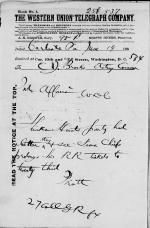
Richard Henry Pratt requests returning party should remain at the Carlisle Indian School until the Sioux chiefs arrive. Pratt notes this will prolong their railroad tickets until the June 23rd.
Note: This item was copied from U.S. National Archives microfilm reels (M234), which were filmed from the original documents found in Record…
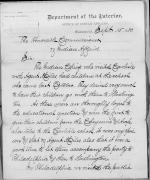
Richard Henry Pratt requests that the Commissioner of Indian Affairs authorize Agent Miles' expenses incurred while transporting a party of six Cheyenne and Arapaho chiefs and their children as well as Daniel Tucker from the Carlisle Indian School to Philadelphia and Washington, D.C. Tucker and the chiefs' children are all Carlisle students.…
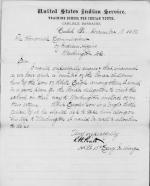
Richard Henry Pratt requests that the Ponca delegation stops at the Carlisle Indian School to see their students on their way to Washington, D.C. Pratt states that White Eagle's son is at the school, and if White Eagle would like to bring him along to D.C., he should be allowed.
Note: This item was copied from U.S. National Archives…
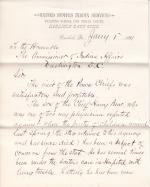
Richard Henry Pratt reports that the visit of Ponca Chiefs Harry Bear, Standing Eagle, and White Buffalo went well. He also notes that Chief Harry Bear asked that his son be returned home due to his falling ill multiple times at Carlisle. Pratt notes that he approved the return home of the student despite his condition improving following…
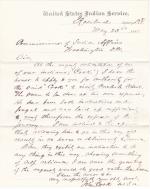
John Cook, a U.S. Indian Agent writes on behalf of Cook, a member of the Sioux Nation, to visit the Carlisle Indian School at his own expense.
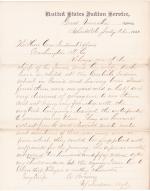
Kihega, a chief of the Iowa Nation, requests funds to allow him, his wife, and an interpreter to visit the Carlisle Indian School to see their children through the U.S. Indian Agent at the Great Nemaha Agency, A. Brosius.
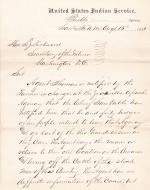
J. M. Haworth, Inspector, details various events in the Pueblo Agency including opposition to the schooling at the agency. Haworth reports that much of the opposition is a result of the religious nature of the schooling. He also notes that parents who had sent children to Carlisle have yet to visit them despite promises made at the time they…
